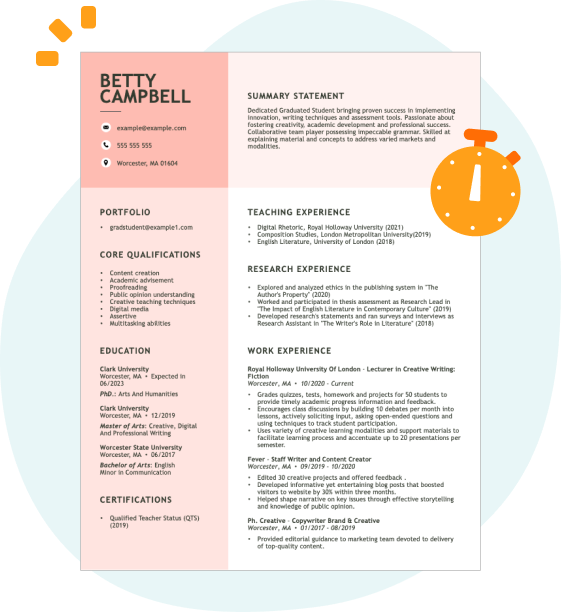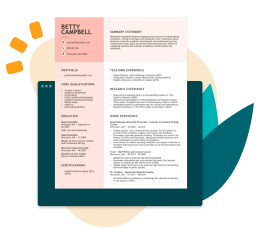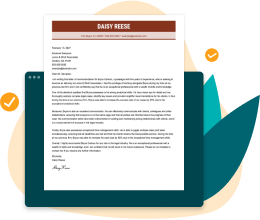Hard skills are technical abilities such as statistical analysis, data interpretation, and skill in software like R or SAS that a biostatistician must demonstrate.
Popular Biostatistician Resume Examples
Discover our top biostatistician resume examples that emphasize critical skills such as data analysis, statistical modeling, and research methodologies. These examples illustrate how to effectively showcase your expertise and accomplishments in the field.
Ready to elevate your job application? Our Resume Builder offers user-friendly templates specifically designed for professionals in statistics and data science, making it simple to create a compelling resume.
Entry-level biostatistician resume
This entry-level resume for a biostatistician effectively highlights the job seeker's analytical skills, demonstrated through significant achievements in previous roles and a solid educational background in biostatistics. New professionals in this field must showcase their technical competencies and project management experiences to attract employers, particularly when they have limited direct work history.
Mid-career biostatistician resume
This resume effectively showcases the job seeker's qualifications through a clear presentation of accomplishments and responsibilities. The emphasis on data analysis expertise and successful project outcomes illustrates their readiness for advanced challenges and leadership roles in biostatistics.
Experienced biostatistician resume
This section illustrates the applicant's strong background as a biostatistician, with notable achievements such as leading a study that improved accuracy by 25% and optimizing data processes to save $50k. The clear formatting allows hiring managers to quickly identify key accomplishments and skills.
Resume Template—Easy to Copy & Paste
Ming Chen
San Diego, CA 92111
(555)555-5555
Ming.Chen@example.com
Professional Summary
Detail-oriented Biostatistician with 5 years of experience in clinical trials and predictive modeling. Proficient in SAS, R, and machine learning, driving analytical innovations that have reduced errors by 15% and improved efficiency by 30%. Published author, passionate about advancing health through data-driven insights.
Work History
Biostatistician
Precision Health Analytics - San Diego, CA
January 2023 - October 2025
- Developed predictive models increasing accuracy by 20%
- Analyzed genomic data for clinical trials with 15% error reduction
- Created dashboards boosting data insight delivery by 30%
Statistical Data Analyst
DataCare Solutions - San Francisco, CA
February 2020 - December 2022
- Automated reports cutting analysis time by 40 hours per month
- Conducted data integration for 5 major healthcare projects
- Improved clinical trial sample selection accuracy by 15%
Junior Statistical Consultant
HealthMetrics Consulting - Riverside, CA
October 2018 - January 2020
- Enhanced data processing efficiency by streamlining pipelines
- Supported 10+ researchers in interpreting statistical outcomes
- Reduced errors in trial data entry by implementing QA processes
Skills
- Statistical Modeling
- Clinical Trial Analysis
- Data Visualization
- Machine Learning Algorithms
- SAS Programming
- R Programming
- Regression Analysis
- Big Data Analytics
Education
Master of Science Biostatistics
Harvard University Cambridge, Massachusetts
May 2018
Bachelor of Science Mathematics
University of California, Berkeley Berkeley, California
May 2016
Certifications
- Certified Biostatistics Specialist - American Statistical Association
- Advanced Clinical Trials Certification - Clinical Research Society
Languages
- Spanish - Beginner (A1)
- French - Beginner (A1)
- Mandarin Chinese - Beginner (A1)
How to Write a Biostatistician Resume Summary
Your resume summary is the first impression hiring managers will have of you. It’s important to craft it effectively, as it sets the tone for your entire application and showcases your suitability for the biostatistician role.
As a biostatistician, you should highlight your analytical skills and experience in data interpretation. Your summary should emphasize your ability to contribute to research and public health initiatives through statistical expertise.
To illustrate what makes a strong resume summary, we’ll look at examples that demonstrate effective strategies and common pitfalls:
Weak resume summary
I am a biostatistician with many years of experience and strong analytical skills. I seek a position where I can use my talents and contribute to important research. A company that values teamwork and offers career development is what I am looking for. I believe I could be a great addition to your staff.
- Lacks specific details about relevant biostatistical skills or achievements, making it too vague
- Overuses personal pronouns, which detracts from professional tone and clarity
- Emphasizes the applicant’s desires instead of demonstrating how they can add value to the organization
Strong resume summary
Results-driven biostatistician with 7+ years of experience in clinical trial research and epidemiological studies. Achieved a 25% increase in data accuracy through the implementation of advanced statistical modeling techniques. Proficient in SAS, R, and SPSS, with a strong background in study design and analysis, contributing to improved patient outcomes and informed healthcare decisions.
- Begins with specific years of experience and area of expertise
- Highlights quantifiable achievement that showcases direct impact on research quality
- Mentions relevant technical skills that are essential for success in biostatistics roles
PRO TIP
Showcasing Your Work Experience
The work experience section is important for your resume as a biostatistician, as it will contain the bulk of your content. Good resume templates always emphasize this part to highlight your professional journey.
This section should be organized in reverse-chronological order, detailing your previous positions. Use bullet points to emphasize key achievements and contributions made during each role.
To assist you further, we’ve put together examples that demonstrate effective work history entries for biostatisticians. These examples will illustrate what stands out and what pitfalls to avoid:
Biostatistician
HealthAnalytics Inc. – San Francisco, CA
- Analyzed data for studies.
- Used statistical software and tools.
- Collaborated with researchers.
- Prepared reports and presentations.
- Lacks specific employment dates to establish timeline
- Bullet points are vague and do not highlight unique contributions
- Emphasizes routine tasks rather than effective achievements or metrics
Biostatistician
Health Analytics Corp – Boston, MA
June 2020 - Present
- Develop and execute statistical models to analyze clinical trial data, leading to a 30% increase in the accuracy of patient outcome predictions.
- Collaborate with cross-functional teams to design research protocols, improving study efficiency by reducing turnaround time by 20%.
- Provide training and mentorship for junior statisticians, fostering a collaborative environment that improves team capability and productivity.
- Starts with dynamic action verbs that clearly convey the job seeker's contributions
- Incorporates quantifiable achievements to illustrate impact and effectiveness
- Highlights relevant skills essential for biostatisticians in a clear and accessible manner
While the resume summary and work experience sections are important, don’t overlook other critical areas that also need your attention. Each part of your resume contributes to showcasing your qualifications effectively. For more detailed guidance, explore our comprehensive guide on how to write a resume.
Top Skills to Include on Your Resume
A well-structured skills section is important for a biostatistician’s resume. It allows you to showcase your qualifications and expertise at a glance, making it easier for employers to see your fit for the role.
In this field, focus on highlighting technical skills such as statistical analysis, data visualization, and skill in software like R, SAS, or Python. Including these specific tools demonstrates your capability to handle complex data effectively.
Soft skills, including critical thinking, effective communication, and collaboration, are essential for translating complex data into actionable insights and fostering teamwork in research settings.
Selecting the right resume skills is important for meeting employer expectations and navigating automated screening systems. Many organizations use software to filter out applicants who lack essential qualifications, so aligning your skills with those needs is important.
To effectively tailor your resume, review job postings carefully. They often highlight key skills that recruiters are seeking, allowing you to prioritize those areas and improve your chances of passing through ATS filters successfully.
PRO TIP
10 skills that appear on successful biostatistician resumes
To catch the eye of recruiters, highlight high-demand skills relevant to biostatistics on your resume. You can find these essential skills reflected in our resume examples, giving you the confidence to apply effectively.
Consider integrating these 10 skills into your resume if they align with your experience and job criteria:
Statistical analysis
Data visualization
Programming in R or Python
Knowledge of statistical software (SAS, SPSS)
Research methodology
Critical thinking
Problem-solving
Attention to detail
Communication skills
Team collaboration
Based on analysis of 5,000+ biology professional resumes from 2023-2024
Resume Format Examples
Selecting the appropriate resume format is important for a biostatistician, as it effectively showcases your analytical skills, research experience, and professional development in a clear and organized manner.
Functional
Focuses on skills rather than previous jobs
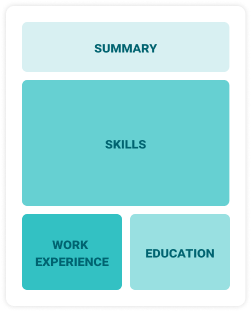
Best for:
Recent graduates and career changers with up to two years of experience
Combination
Balances skills and work history equally
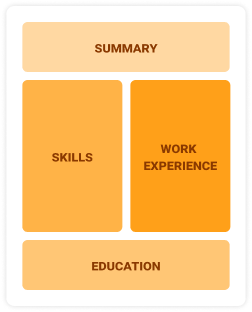
Best for:
Mid-career professionals focused on demonstrating their skills and potential for growth
Chronological
Emphasizes work history in reverse order
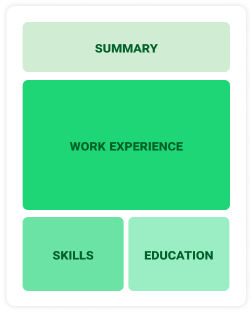
Best for:
Experienced leaders skilled in advanced statistical methodologies and data analysis
Frequently Asked Questions
Should I include a cover letter with my biostatistician resume?
Absolutely, including a cover letter can significantly improve your application by showcasing your unique qualifications and enthusiasm for the position. It allows you to connect your experiences directly to the job requirements. If you're looking for guidance, consider checking out our comprehensive guide on how to write a cover letter or use our easy-to-use Cover Letter Generator for quick assistance.
Can I use a resume if I’m applying internationally, or do I need a CV?
When applying for jobs outside the U.S., it's often better to use a CV instead of a resume. A CV provides a comprehensive overview of your academic and professional achievements. To assist you, we offer various CV examples that guide you in formatting and creating an effective CV tailored for international standards. Additionally, understanding how to write a CV can be beneficial in crafting one that meets global expectations.
What soft skills are important for biostatisticians?
For biostatisticians, critical thinking, problem-solving, and effective communication are essential interpersonal skills. These abilities allow you to interpret complex data accurately, collaborate seamlessly with research teams, and clearly convey findings to non-experts, ensuring powerful data-driven decisions in healthcare.
I’m transitioning from another field. How should I highlight my experience?
Highlight your analytical thinking, attention to detail, and communication skills gained from prior roles. These transferable skills are important in biostatistics and showcase your potential despite limited direct experience. Share specific instances where you used data to drive decisions or improve processes, linking those achievements to the responsibilities of a biostatistician.
Should I include a personal mission statement on my biostatistician resume?
Including a personal mission statement on your resume is definitely recommended. It effectively showcases your values and career aspirations, which can be particularly beneficial when applying to organizations that prioritize cultural fit or have a strong commitment to community impact and ethical practices.
How do I add my resume to LinkedIn?
To increase your resume's visibility as a biostatistician on LinkedIn, add your resume to LinkedIn and highlight key projects in the "About" and "Experience" sections. This approach helps recruiters easily find qualified job seekers by showcasing your expertise and achievements in data analysis.


